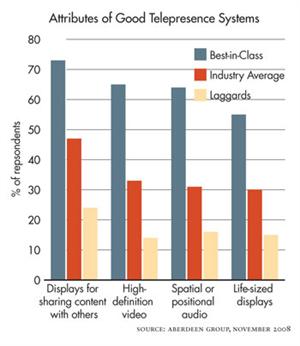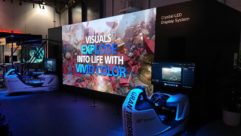

What Makes Good Telepresence?
Few would argue that tele-presence systems are among the cool new things in today’s enterprise. But are they AV installs? IT installs? Anecdotally, AV pros say that unless the client is happy with an out-of-the-box solution, the best telepresence requires their expertise. And new research from the Boston-based Aberdeen Group bears this out.
Few would argue that tele-presence systems are among the cool new things in today’s enterprise. But are they AV installs? IT installs? Anecdotally, AV pros say that unless the client is happy with an out-of-the-box solution, the best telepresence requires their expertise. And new research from the Boston-based Aberdeen Group bears this out.
Credit: Aberdeen Group, November 2008
Aberdeen analyzed companies that implemented videoconferencing or telepresence and put them into three groups: Best-in-Class, Industry Average, and Laggards. Among the characteristics of a Best-in-Class install: high-definition video, spatial audio, sound dampening and optimal microphone placement, and life-sized displays.
Sure, the IT folks are expert at bandwidth optimization, but telepresence sounds like an AV project to us.








